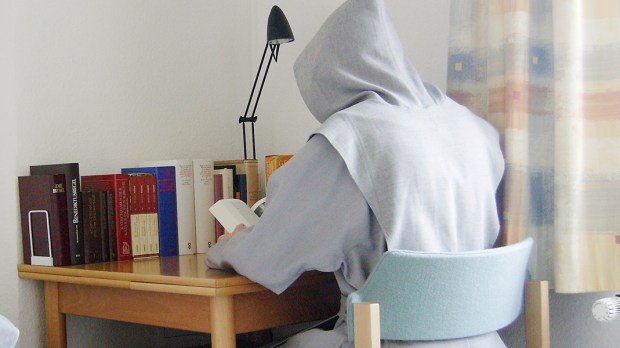The change of climate was only the beginning for Christopher L. Webber. He went from chilly, foggy San Francisco to semi-tropical South Carolina.
And more than that. As he described it, Webber, a recent widower, went from “a community of over a hundred senior citizens, mostly women, centered on entertainment and physical exercises and seldom quiet, to a much smaller community of men centered on contemplation and religious exercises and almost always totally quiet except in prayer.”
“I had considered myself an early riser, being up at 5:30, two hours before the rest of the community,” he said. “Now I would be up almost three hours earlier than that if I expected to continue my usual physical exercises before the monastic day began.”
Webber was a guest at Mepkin Abbey under its Monastic Guest Program.
Mepkin was founded in 1949 north of Charleston, South Carolina, by monks of Gethsemani in Kentucky, which was Thomas Merton’s home. As a community of the Order of Cistercians of the Strict Observance, known as Trappists, they follow the Rule of St. Benedict. The monks devote their lives to prayer, spiritual study, work and hospitality. At Mepkin, to support themselves, they grow mushrooms and sell fruitcakes.
For several years they have been receiving guests on a long-term basis—primarily men interested in monastic life but who are not quite ready to commit. “Participants in this program live in the monastic community for a period of 30 days,” Mepkin explains on its website. “At the request of the participant, this period may be renewed following an evaluation by the monks. Monastic Guests are provided a room with private bath within the monastic community itself, and must participate in all the activities and obligations of the monks—from Vigils at 3:20 am to Compline at 7:30 pm. They are assigned work just as the monks are.”
Whilden Nettles said he had come to Mepkin “to make sense of my life and to make sense of myself.” He recalled his first day, when he stumbled into the church well before sunrise. “It was too early in the morning for anything to make sense,” he said. “By the afternoon, I felt like I had been at the monastery for years. … I kept wanting to check my phone, but I had placed it away to keep me from doing such a thing. … I wondered if I could handle 29 more days. I didn’t feel at peace.”
He soon realized he was coming out of a multi-tasking world into a place where life follows a more natural time scheme. “You had to shift your focus often, but it had to stay on whatever task you were doing at that moment, whether it be singing, working, or eating. There were no distractions. On the second or third day, my mind finally slowed to the right speed. I was no longer confused, and reveled in the simplicity of the schedule and the life.”
James P. Leahy made a similar discovery, specifically in the prayer life of the community. “Often, a single phrase in a Psalm sung many times before can melt the heart to the point of tears. Not tears of sorrow, but of cleansing water,” he commented.
Leahy and others do not pretend that Mepkin is a paradise without faults, but that’s only being realistic. “After a few visits, a person gets to know the monks,” he said. “With all the wonder and warts of our own families. Each one is on the journey of life sharing the road with us. Some feel the physical effects of aging. Some get testy when they are tired. Some break the silence once in a while. Just like folks outside the cloister. That said, they all guide by example. And seem to have infinite patience with occasional visitors.”
Webber, a retired priest of the Episcopal Church, said that by the end of his month at Mepkin, he began to feel “truly caught up in the silence of the place and the community.”
“I remembered reading a book years ago by Chaim Potok in which one of the characters said, ‘I’ve begun to realize that you can listen to silence and learn from it. It has a quality and a dimension all its own. It talks to me sometimes. I feel myself alive in it. It talks. And I can hear it.’ By the end of the month, I had begun to experience that aspect of silence and truly to ‘feel myself alive in it.'”

